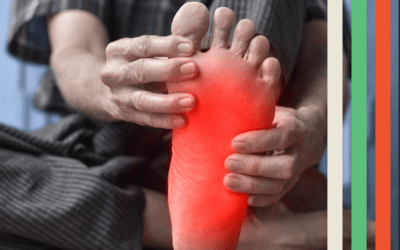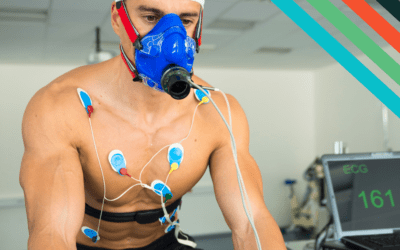Incidence of Shoulder Pain
Ever had a shoulder injury that concerned you – so you demanded an ultrasound, X-ray or MRI to figure out why things were pinching and bugging you so much?
Based on the shoulder survey we put out a few weeks ago, at least 10% of our newsletter responded that they have been dealing with some shoulder issues recently. Other surveys would lead us to believe that the incidence of shoulder pain is even higher than that:
“The community prevalence of shoulder pain varied widely across the countries included in our review, with a median of 16% (range 0.67 to 55.2%). Estimates were generally higher for women than men and were higher in high-income nations.” (Lucas et al, 2022).

(Lucas et al, 2022)
The problem we see is that people with pinchy shoulders always think they are one ultrasound or MRI away from solving all their issues. They will beg clinicians to give them referrals, and tell us that they can’t train until they figure out what is causing them pain or pinching when they move.
What are shoulder abnormalities?
The reality is, when you scan asymptomatic shoulders with no pain, their ultrasound findings look like this:

Girish et al (2011)
In the associated paper from the above table, 96% of ASYMPTOMATIC people ages 40-70 had “abnormal findings” and pretty serious sounding injuries, despite being pain free and having zero clue.
Let that sink in for a second, ASYMPTOMATIC shoulder abnormalities were found in 96% of subjects 40–70 years old (Girish et al 2011).
It’s been awhile since I took a math class but if I’m not mistaken, if 96% of cases have an “abnormal finding”, maybe that should be categorized as NORMAL and not ABNORMAL?
This raises the question, if you’re in pain, and you get an MRI and it shows up with one of these things, does it change the course of your rehab? I would argue no… most of the time.
If MOST people are walking around with tears, calcifications, and arthritis in their shoulders and NO pain, what distinguishes them from people who have these things and DO have pain?
The problem is complex and other researchers have tried to figure out why this might be.
What causes pain?
Pain is complex and this is not a blog post going into the mechanisms of how pain happens. What we’re interested in finding out is what could be driving this pain? And should we train through it?
Researchers have some ideas about why pain happens, and its very complex and multifactorial. Take this web-plot below outlining all of the complex reasons why someone might have (low back, in this case) pain:

Cholewicki et al (2019)
The webbed-plot for shoulder pain probably doesn’t look much different that this. Your shoulder pain is likely driven by a combination of these types of things such as:
- Individual factors (a genetic predisposition for a deep glenoid fossa that predisposes you to more pinching of the rotator cuff in certain internally rotated positions, for example)
- Psychological factors (a practitioner who told you your ultrasound results look TERRIBLE which drove up your fear and set off a cascade of more pain and negative feelings, for example)
- Contextual factors (timely and appropriate referrals to the correct professionals, for example)
- Biomechanical factors (poor motor control of the muscles of the rotator cuff which stabilize the shoulder joint and prevent pinching, for example)
From this research study, they deduced that the more ways in which someone tackles their pain, the higher their likelihood of reduction in pain:

Cholewicki et al (2019)
So if presence of degradation isn’t predictive of pain, and pain is complex and multifactorial that you can address in more ways than 10, as an exercise physiology and strength and conditioning professional – how would I tackle shoulder pain you might be wondering? That’s coming up.
“Abnormal findings” are normal
We tend to think people with no pinch/pain versus pinch & pain looks like this:

When in reality, it looks more like this:

…because you might feel healthy… but have degeneration that’s normal and common!
This is why it’s so important to not get caught up in the fact that there is a pinch & pain, and to increase capacity in the tissues no matter the issue….because we know that increased capacity of the muscles, the bones, the ligaments and the tendons still results in better function long term than passive solutions, injections, or even surgery.
“When compared to more invasive treatment approaches, such as injection and surgery, exercise fares well…. There is no clinically important difference between exercise therapy and subacromial decompression surgery and rotator cuff repair surgery (Karjalainen et al 2019 & Lahdeoja et al 2020).”
Toolbox & Case Study
As most kinesiologists, strength and conditioning coaches, and exercise physiologists, the tools I have in my toolbox are: biomechanical factors (is the WAY you’re moving causing the problem?), strength factors (are there obvious asymmetries or deficits that could explain WHY one area is getting overloaded or underloaded?), and individual factors (are there things YOU are choosing to do with your body that could explain the problem?).
With a recent client, we did an assessment to find out just this, and found that there weren’t too many strength imbalances that could explain her shoulder pain, there weren’t obvious biomechanical problems with the WAY she was moving, but individual factors came to the forefront. In a front raise exercise, a lat pulldown, a dumbbell bench press, and other exercises, she would get a pinch in the shoulder with specific hand rotations. We found the positions that caused the least amount of pain, then trained through some pain, and increased the capacity of the muscles, tendons, and ligaments to help create a more robust system.
HERE’s an exercise we used with this client and how we might modify it for someone experiencing pain with the movement, just like we did with that client. Watch it til the end to get some of those specialized cues.
After a few months of training with us, this client was pain free in most or all shoulder movements and submitted this review:

So the answer to the header of this post, as we like to say: “Train with some pain”.
PLUS, THOSE WHO TRAIN WITH SOME PAIN HAVE BETTER OUTCOMES THAN THOSE WHO DON’T:
“A systematic review and meta‐analysis found that painful therapeutic exercise was not a barrier to experiencing a successful outcome with exercise therapy for a variety of musculoskeletal conditions (Smith et al., 2017). In fact, at short‐term follow‐up, exercising into pain was significantly better (Smith et al., 2017).”
Train with some pain…. But how much? Research says up to 5/10 on the scale below!

With our 12-week Shoulder Foundations program, you can start self-assessing these things too, for less than the cost of one appointment with us. We will help guide you through any modifications you might need from the regular program, and can offer advice on your rehab.! We encourage you to check it out.

More About The Author
Carla Robbins, Owner of Vital Strength and Physiology Inc
Carla’s journey into the world of endurance training, strength and conditioning, and exercise physiology began with her Undergraduate Degree in Exercise Physiology at the University of Calgary and continued into her graduation with a Master’s in Exercise Physiology in 2016. Between working for the Canadian Sports Institute to the creation of her company Vital Strength and Physiology Inc, Carla is driven by a desire to find better ways to address complex cases in professional and everyday athletes and individuals.
References
Bolia, I. K., Collon, K., Bogdanov, J., Lan, R., & Petrigliano, F. A. (2021). Management Options for Shoulder Impingement Syndrome in Athletes: Insights and Future Directions. https://doi.org/10.2147/OA
Burkhart, S. S., Morgan, C. D., & ben Kibler, W. (2003). The disabled throwing shoulder: Spectrum of pathology Part I: Pathoanatomy and biomechanics. Arthroscopy – Journal of Arthroscopic and Related Surgery>, 19(4), 404–420. https://doi.org/10.1053/jars.2003.50128
Burkhart, S. S., Morgan, C. D., & Kibler, W. ben. (2003a). The disabled throwing shoulder: Spectrum of pathology part II: Evaluation and treatment of SLAP lesions in throwers. In Arthroscopy – Journal of Arthroscopic and Related Surgery (Vol. 19, Issue 5, pp. 531–539). W.B. Saunders. https://doi.org/10.1053/jars.2003.50139
Burkhart, S. S., Morgan, C. D., & Kibler, W. ben. (2003b). The disabled throwing shoulder: Spectrum of pathology part III: The SICK scapula, scapular dyskinesis, the kinetic chain, and rehabilitation. In Arthroscopy – Journal of Arthroscopic and Related Surgery (Vol. 19, Issue 6, pp. 641–661). W.B. Saunders. https://doi.org/10.1016/S0749-8063(03)00389-X
Cholewicki, J., Breen, A., Popovich, J. M., Peter Reeves, N., Sahrmann, S. A., van Dillen, L. R., Vleeming, A., & Hodges, P. W. (2019). Can biomechanics research lead to more effective treatment of low back pain? A point-counterpoint debate. In Journal of Orthopaedic and Sports Physical Therapy (Vol. 49, Issue 6, pp. 425–436). Movement Science Media. https://doi.org/10.2519/jospt.2019.8825
Edouard, P., Degache, F., Beguin, L., Samozino, P., Gresta, G., Fayolle-Minon, I., Farizon, F., & Calmels, P. (2011). Rotator cuff strength in recurrent anterior shoulder instability. Journal of Bone and Joint Surgery, 93(8), 759–765. https://doi.org/10.2106/JBJS.I.01791
Giai Via, A., de Cupis, M., Spoliti, M., & Oliva, F. (2013). Clinical and biological aspects of rotator cuff tears. In Ligaments and Tendons Journal (Vol. 3, Issue 2).
Girish, G., Lobo, L. G., Jacobson, J. A., Morag, Y., Miller, B., & Jamadar, D. A. (2011). Ultrasound of the shoulder: Asymptomatic findings in men. American Journal of Roentgenology, 197(4). https://doi.org/10.2214/AJR.11.6971
Horowitz, E. H., & Aibinder, W. R. (2023). Shoulder Impingement Syndrome. In Physical Medicine and Rehabilitation Clinics of North America (Vol. 34, Issue 2, pp. 311–334). W.B. Saunders. https://doi.org/10.1016/j.pmr.2022.12.001
Khodaverdizadeh, M., Rahimi, N. M., & Esfahani, M. (2023). A Systematic Review and Meta-analysis: The Effect of Scapular-focused Exercise Therapy on Shoulder Pain and Function and Scapular Positioning in People With Scapular Dyskinesia. Iranian Rehabilitation Journal, 21(4), 577–590. https://doi.org/10.32598/irj.21.4.1933.1
Kibler, W. Ben, Ludewig, P. M., McClure, P. W., Michener, L. A., Bak, K., & Sciascia, A. D. (2013). Clinical implications of scapular dyskinesis in shoulder injury: The 2013 consensus statement from the “scapular summit.” British Journal of Sports Medicine, 47(14), 877–885. https://doi.org/10.1136/bjsports-2013-092425
Kolber, M. J., Cheatham, S. W., Salamh, P. A., & Hanney, W. J. (2014). Characteristics Of Shoulder Impingement In The Recreational Weight-Training Population. Journal of Strength and Conditioning Research, 28(4), 1081–1090. www.nsca.com
Litchfield, R., Hawkins, R., Dillman, C. I., & Atkins, J. (1993). Clinical Rehabilitation for the Overhead Athlete. www.jospt.org
Longo, U. G., Berton, A., Papapietro, N., Maffulli, N., & Denaro, V. (2012). Biomechanics of the rotator cuff: European perspective. Medicine and Sport Science, 57, 10–17. https://doi.org/10.1159/000328870
Lucas, J., van Doorn, P., Hegedus, E., Lewis, J., & van der Windt, D. (2022). A systematic review of the global prevalence and incidence of shoulder pain. BMC Musculoskeletal Disorders, 23(1). https://doi.org/10.1186/s12891-022-05973-8
Morton, S. K., Whitehead, J. R., Brinkert, R. H., & Caine, D. J. (2011). Resistance Training vs. Static Stretching: Effects on Flexibility and Strength. Journal OfStrength and Conditioning Research, 25(12), 3391–3400. www.nsca-jscr.org
Naunton, J., Street, G., Littlewood, C., Haines, T., & Malliaras, P. (2020). Effectiveness of progressive and resisted and non-progressive or non-resisted exercise in rotator cuff related shoulder pain: a systematic review and meta-analysis of randomized controlled trials. Clinical Rehabilitation, 34(9), 1198–1216. https://doi.org/10.1177/0269215520934147
Panagiotopoulos, A. C., & Crowther, I. M. (2019). Scapular Dyskinesia, the forgotten culprit of shoulder pain and how to rehabilitate. In SICOT-J (Vol. 5). EDP Sciences. https://doi.org/10.1051/sicotj/2019029
Peters, S. D., Bullock, G. S., Goode, A. P., Garrigues, G. E., Ruch, D. S., & Reiman, M. P. (2018). The success of return to sport after ulnar collateral ligament injury in baseball: a systematic review and meta-analysis. In Journal of Shoulder and Elbow Surgery (Vol. 27, Issue 3, pp. 561–571). Mosby Inc. https://doi.org/10.1016/j.jse.2017.12.003
Powell, J. K., Lewis, J., Schram, B., & Hing, W. (2024). Is exercise therapy the right treatment for rotator cuff-related shoulder pain? Uncertainties, theory, and practice. In Musculoskeletal Care (Vol. 22, Issue 2). John Wiley and Sons Ltd. https://doi.org/10.1002/msc.1879
Rekha, K., & Vaiyapuri, A. (n.d.). Effect of Stretching and Strengthening Shoulder Muscles in Protracted Shoulder in Healthy Individuals. https://www.researchgate.net/publication/265530803
Schoenfeld, B. (n.d.). Accentuating Muscular Development Through Active Insufficiency and Passive Tension.
Schoenfeld, B., Gul, R., Sonmez, T., Kolber, M. J., Contreras, B., Harris, R., & Ozen, S. (2013). Effect Of Hand Position On EMG Activity Of The Posterior Shoulder Musculature During A Horizontal Abduction Exercise. Journal of Strength and Conditioning Research, 27(10), 2644–2650. www.nsca.com
Schoenfeld, B. J. (n.d.). The Mechanisms of Muscle Hypertrophy and their Application to Resistance Training. www.nsca-jscr.org
Schoenfeld, B. J., Contreras, B., Vigotsky, A. D., Ogborn, D., Fontana, F., & Tiryaki-Sonmez, G. (2016). Upper body muscle activation during low-versus high-load resistance exercise in the bench press. Isokinetics and Exercise Science, 24(3), 217–224. https://doi.org/10.3233/IES-160620
Sciascia, A., & Kibler, W. ben. (2010). Current concepts: Scapular dyskinesis. British Journal of Sports Medicine, 44(5), 300–305. https://doi.org/10.1136/bjsm.2009.058834
Steuri, R., Sattelmayer, M., Elsig, S., Kolly, C., Tal, A., Taeymans, J., & Hilfiker, R. (2017). Effectiveness of conservative interventions including exercise, manual therapy and medical management in adults with shoulder impingement: A systematic review and meta-analysis of RCTs. In British Journal of Sports Medicine (Vol. 51, Issue 18, pp. 1340–1347). BMJ Publishing Group. https://doi.org/10.1136/bjsports-2016-096515
Struyf, F., Nijs, J., Meeus, M., Roussel, N. A., Mottram, S., Truijen, S., & Meeusen, R. (2014). Does scapular positioning predict shoulder pain in recreational overhead athletes? International Journal of Sports Medicine, 35(1), 75–82. https://doi.org/10.1055/s-0033-1343409
Tashjian, R. Z. (2012). Epidemiology, Natural History, and Indications for Treatment of Rotator Cuff Tears. In Clinics in Sports Medicine (Vol. 31, Issue 4, pp. 589–604). https://doi.org/10.1016/j.csm.2012.07.001
Warneke, K., Hillebrecht, M., Claassen-Helmers, E., Wohlann, T., Keiner, M., & Behm, D. G. (2023). 597` 597`Effects of a Home-Based Stretching Program on Bench Press Maximum Strength and Shoulder Flexibility. ©Journal of Sports Science and Medicine, 22, 597–604. https://doi.org/10.52082/jssm.2023.597`Effects
Willmore, E. G., & Smith, M. J. (2016). Scapular dyskinesia: evolution towards a systems-based approach. Shoulder and Elbow, 8(1), 61–70. https://doi.org/10.1177/1758573215618857



